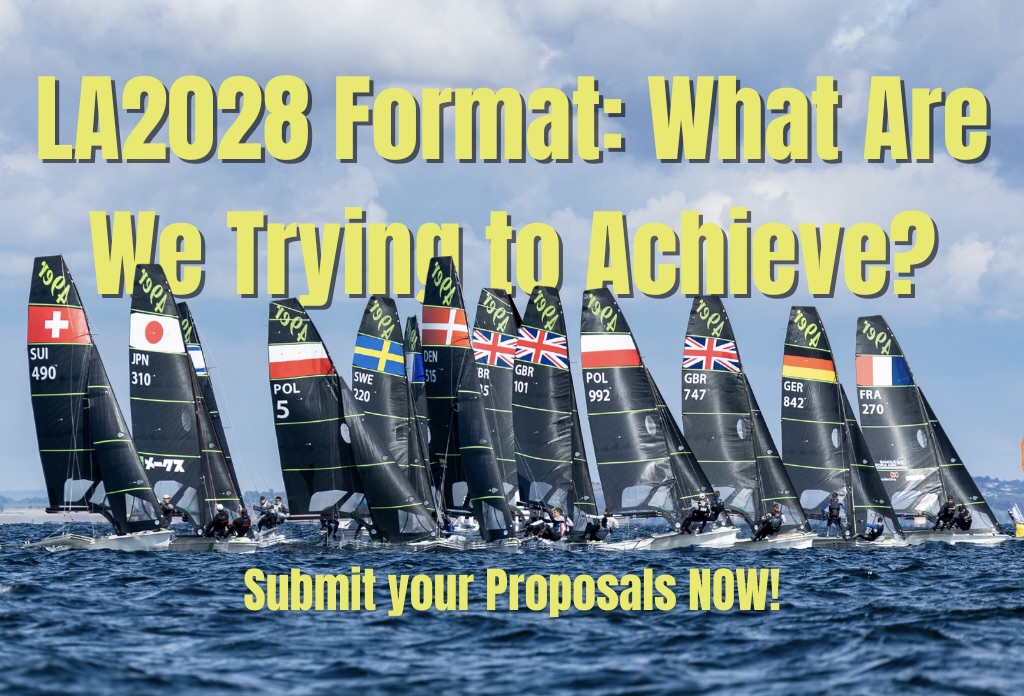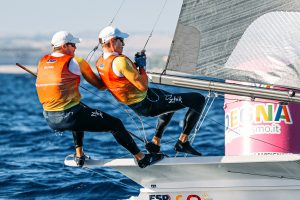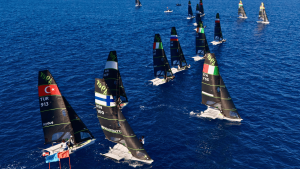The Olympic sailing community is focused on the critical question of format. Last week the current option from World Sailing was compared against three options we thought were better. Here, we break down the probability of the fleet racing leader winning gold in each scenario, and introduce three more options submitted by the community.
Speaking of the community, we got lots of feedback about discussing the format changes being proposed. Many questioned why sailing should have to change at all. We’ll get into the big picture in a future post, but for now let’s move forward with the assumption things are going to change, and review what options are best.
The table below shows the odds of the leader from the opening series winning the gold medal under the four format options we reviewed, and the three additional formats proposed since that article. All sailors can imagine the position a leader is in after three days of racing with one day to go. Typically, they are in great shape to win the regatta, but will still have plenty of fighting to go. Their odds of winning depend on how much of a lead they have built up and how well they sail on the final day.
Let’s see how these other formats stack up to that generalized assessment of normal racing:
| Format | Odds of leader winning Gold | Maths |
| 30 minutes of Tears | 12.5% | Over two races 50% of the fleet is eliminated, and then a ¼ chance of the four remaining teams winning gold. (1/2)(1/4) |
| Win Two Races from Eight Boats | 30.9% | The series can be between one and three races, so we have to add the odds of winning each race by the odds of each race happening.
Race 1, (1/8) chance time (100% chance of racing happening) = 12.5% Race 2, (1/6) chance of winning times a (75% chance of the race happening) = 16.7% Race 3, (1/4) chance of winning times a 25% chance of the race happening is = 6.2%
Add those odds for a 30.9% chance total
|
| Sail GP Style | ~20% | In this case, the final is easy to figure out, as it’s a one in four chance, or 25%. There is also a chance the leader doesn’t make it to the final, but that depends on how far ahead they are and how well they sail in the semi final, so we round down to 20% and call that close enough. |
| Win the Day | Depends on skill | Some of these formats are less structured and contrived. The Win the Day format can have teams enter virtually tied on points or have a team sailing very well can have a significant lead. As such, the odd depends entirely on how well teams have sailed during the regatta. |
| Pursuit Race | ~20% | This one is really hard to know, as we don’t often race like this. But one might equate this to a similar odds of a team being first to the windward mark of a regular race and how often they go on to win that race. The old SAP Sailing Analytics database could have told us this, but since it’s been put on ice lately we can’t quantify it easily. 20 percent sounds about right, but the odds could be higher. |
| ILCA Tournament | Depends on skill | The beauty of this format is there is no leader heading into the final day, so the debate goes away! The first two days cut down the fleet by less than half, so six races with a drop is reasonable. Then, each round is three races sailed like a mini regatta, with half the boats advancing.
In the Final proposed by ILCA, there are 14 boats doing three races, so the straight math odds are 7.1% for each person, but that discounts skill as we show it today over a series of races. The number of boats would be reduced to 8 boats per flight in 49er, FX, Nacra 17, 470, etc. as the whole Olympic fleets is about 20, but the underlying concept would remain the same. The ‘Win the Day’ format and Tournament should be considered sister options. They each rely on small fleet series of 3 races as the basis. The ILCA tournament has a semi final stage while the ‘Win the Day’ option contrives a score from the week to allow a single three-race series on the final day. |
| Four Point Final | 25% | This Four Point final can be used toward any of the options that ultimately reduce the fleet down to four boats. It retains the excitement of having the gold medal decided by whoever crosses the finish line first, but removes some of the randomness by protecting the previous leaders from a total collapse in their position and medal status. |
Here are the detailed proposals for the three additional formats proposed by the community. On balance, all six proposals seem better than the 30-minutes of tears option, but the real question is how many of these should be acceptable to the sailing community.
Three more formats, each better than 30 minutes of tears. Let us know what you think on socials.








